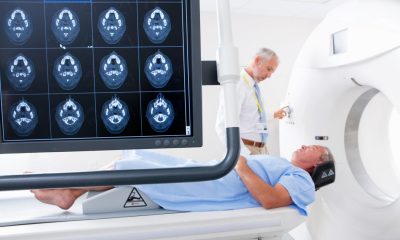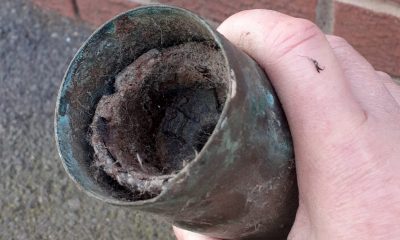By Tom Campbell via SWNS
A new method of regrowing cartilage by zapping the bone could bring pain relief to millions of people who suffer from arthritis.
The technique, which has been successfully tested on rabbits, uses small electric shocks to stimulate cartilage growth.
Around 10 million people in the UK suffer from arthritis or similar conditions which cause joint pain and stiffness.
Normally, pads of cartilage cushions these areas, but they can become worn with age or through injury, causing the bones to rub and making everyday activities like walking incredibly painful.
Currently, treatments involve replacing damaged cartilage with a healthy piece taken from elsewhere in the patient's body or from a donor.
But healthy cartilage is in short supply and removing it from other parts of the body could cause more problems.
To address this, scientists have explored ways of getting the body to regrow its own healthy cartilage, but attempts have failed so far.
Now, scientists have discovered the missing ingredient for the cartilage to grow back properly - electricity.
Co-author Dr. Thanh Nguyen at the University of Connecticut said: "The regrown cartilage doesn’t behave like native cartilage."
The researchers designed what's known as a scaffold, a technique commonly used to repair or reconstruct missing or injured body tissue.
It is made from a biodegradable material often used to stitch up surgical wounds dubbed poly-L lactic acid (PLLA), which is piezo-electric, meaning it produces a little burst of electricity when squeezed.
This way, when the patient starts walking and the joint moves, a weak but steady electrical field is generated, encouraging cells to grow into cartilage.
Lead author Dr. Yang Liu said: "Piezoelectricity is a phenomenon that also exists in the human body.
"Bone, cartilage, collagen, DNA and various proteins have a piezoelectric response. Our approach to healing cartilage is highly clinically translational, and we will look into the related healing mechanism".
Healthy cartilage started growing back and no other ingredients or stem cells, which can cause nasty side effects, were needed, the researchers found.
The scaffold was recently tested in the knee of an injured rabbit who was allowed to exercise on a treadmill.
Dr. Liu said: "This is a fascinating result, but we need to test this in a larger animal with a size and weight closer to a human."
The researchers are hoping to study animals treated with the scaffolding for up to two years to make sure the cartilage is durable.
Dr. Liu added: "Young animals heal more easily than old.
"If the piezoelectric scaffolding helps older animals heal as well, it truly could be a bioengineering breakthrough."
The findings were published in the journal Science Translational Medicine.

 Parenting2 days ago
Parenting2 days ago
 Broadcast4 days ago
Broadcast4 days ago
 Broadcast3 days ago
Broadcast3 days ago
 Broadcast1 week ago
Broadcast1 week ago
 Funny1 week ago
Funny1 week ago
 Shopping1 week ago
Shopping1 week ago
 Money3 days ago
Money3 days ago
 Parenting1 week ago
Parenting1 week ago






















